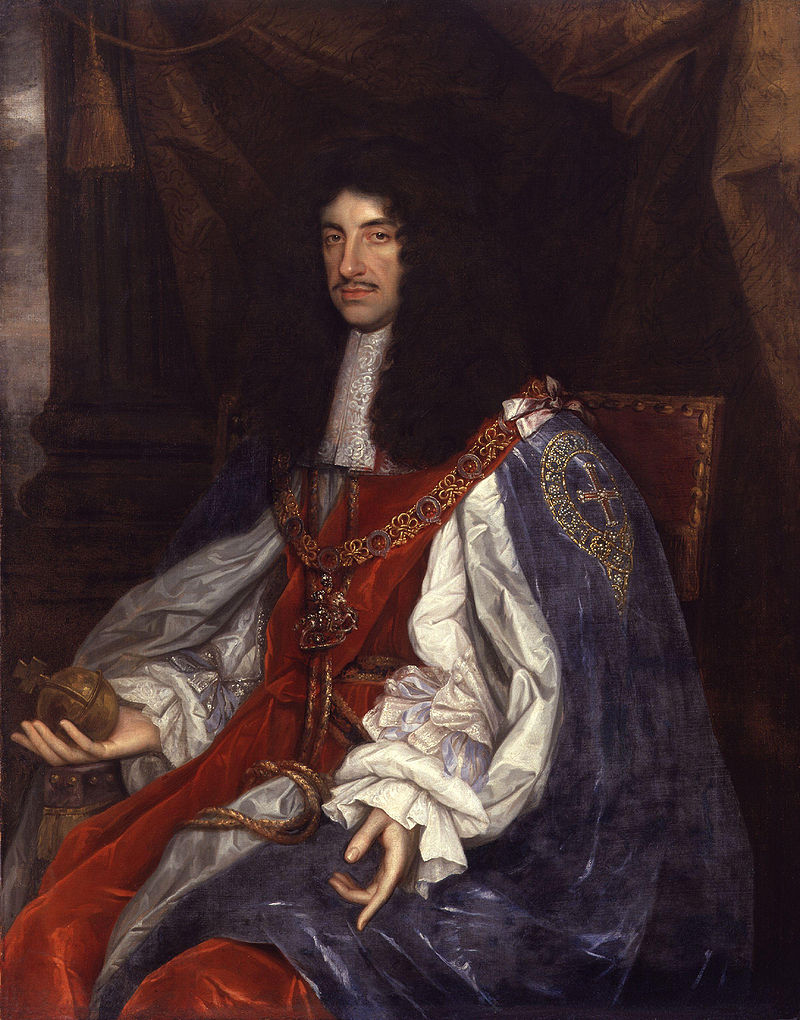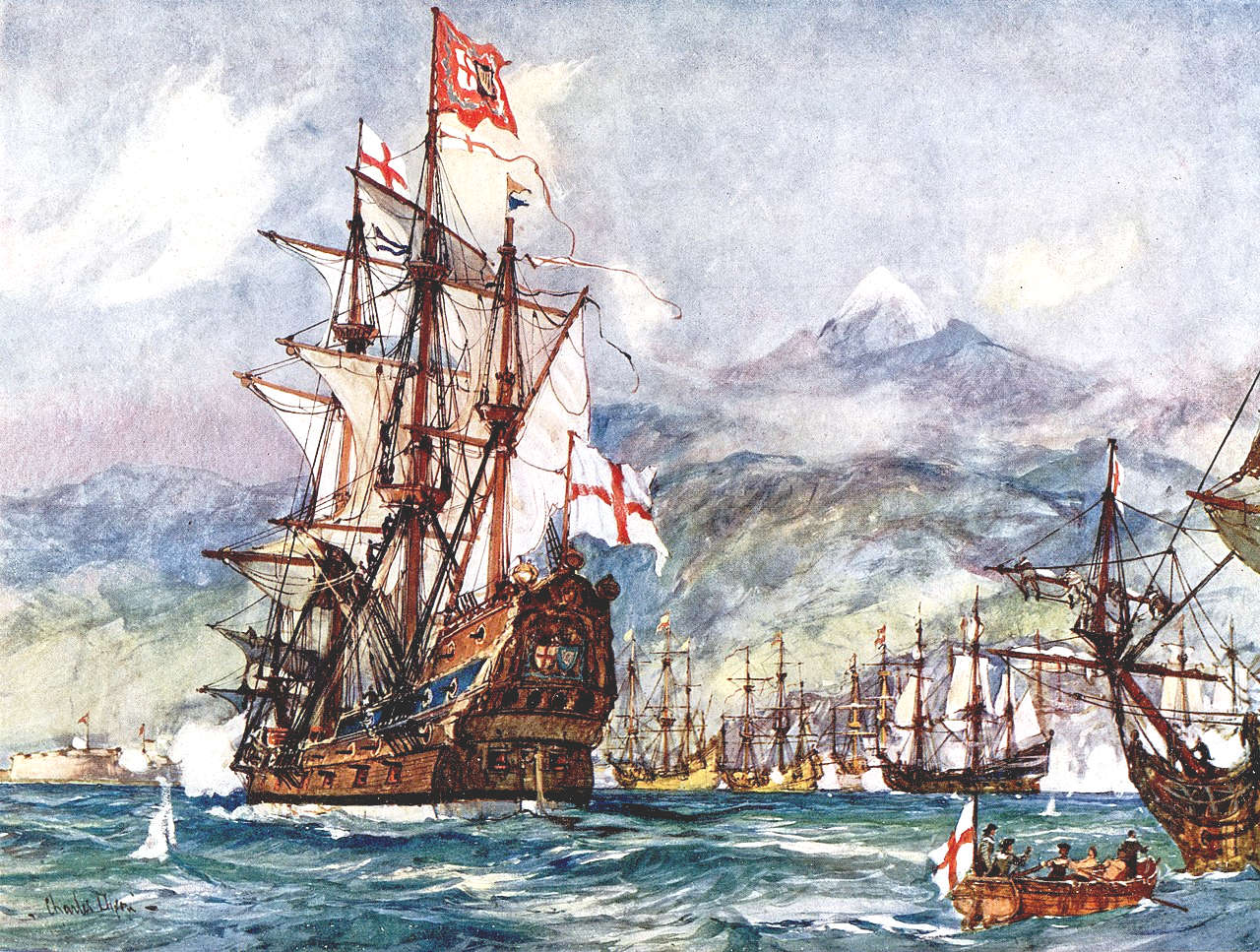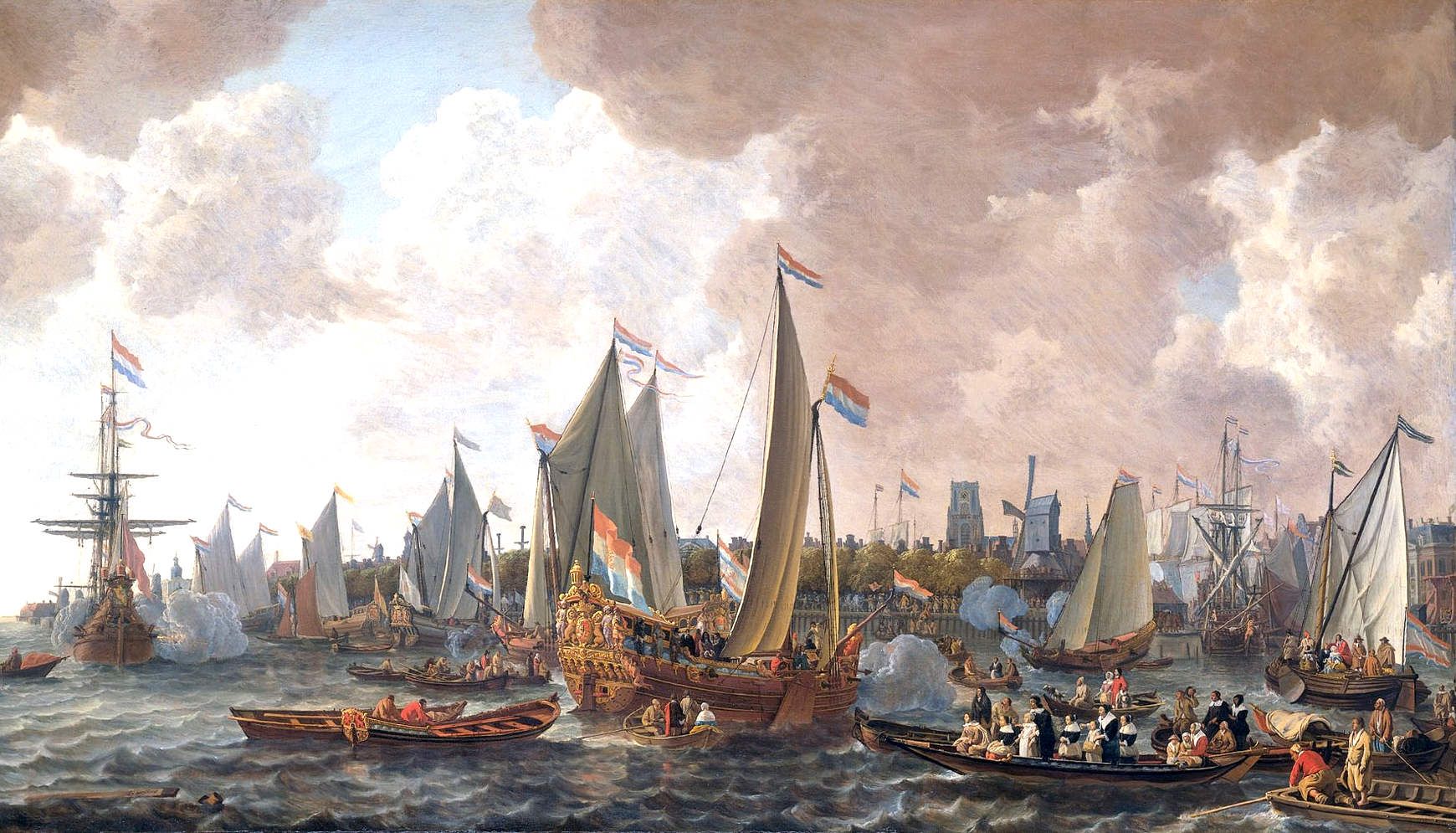|

Portrait
of King Charles II by John Michael Wright - Slave trade charter: Royal
African Company
Charles II
was King of Scotland from 1649 until 1651, and King of England, Scotland and Ireland from the 1660 Restoration of the monarchy until his death in 1685.
Charles II was the eldest surviving child of Charles I of
England, Scotland and Ireland and Henrietta Maria of France. After Charles I's execution at Whitehall on 30 January 1649, at the climax of the English Civil War, the Parliament of Scotland proclaimed Charles II king on 5 February 1649. But England entered the period known as the English Interregnum or the English Commonwealth, and the country was a de facto republic led by Oliver Cromwell. Cromwell defeated Charles II at the Battle of Worcester on 3 September 1651, and Charles fled to mainland Europe. Cromwell became virtual dictator of England, Scotland and Ireland. Charles spent the next nine years in exile in France, the Dutch Republic and the Spanish Netherlands. The political crisis that followed Cromwell's death in 1658 resulted in the restoration of the monarchy, and Charles was invited to return to Britain. On 29 May 1660, his 30th birthday, he was received in London to public acclaim. After 1660, all legal documents stating a regnal year did so as if he had succeeded his father as king in 1649.
Charles's English parliament enacted laws known as the Clarendon Code, designed to shore up the position of the re-established
Church of
England. Charles acquiesced to the Clarendon Code even though he favoured a policy of religious tolerance. The major foreign policy issue of his early reign was the Second Anglo-Dutch War. In 1670, he entered into the Treaty of Dover, an alliance with his cousin King Louis XIV of France. Louis agreed to aid him in the Third Anglo-Dutch War and pay him a pension, and Charles secretly promised to convert to Catholicism at an unspecified future date. Charles attempted to introduce religious freedom for Catholics and Protestant dissenters with his 1672 Royal Declaration of Indulgence, but the English Parliament forced him to withdraw it.
In 1679, Titus Oates's revelations of a supposed Popish Plot sparked the Exclusion Crisis when it was revealed that Charles's brother and heir presumptive, James,
Duke of
York, had become a Roman
Catholic. The crisis saw the birth of the pro-exclusion Whig and anti-exclusion Tory parties. Charles sided with the Tories, and after the discovery of the Rye House Plot to murder Charles and James in 1683, some Whig leaders were executed or forced into exile. Charles dissolved the English Parliament in 1681 and ruled alone until his death in 1685. He was allegedly received into the Catholic Church on his deathbed.
Traditionally considered one of the most popular English kings, Charles is known as the Merry Monarch, a reference to the liveliness and hedonism of his court. He acknowledged at least 12 illegitimate children by various mistresses, but left no legitimate children and was succeeded by his brother, James.
With England at war again with Holland, and knowing of the troubles in the Caribbean and the risks to the very lucrative sugar trade, King Charles II (right) enlisted the help of the notorious
Captain
Henry Morgan. The charismatic ‘pirate’ Morgan was knighted by the King and returned to Jamaica in 1674 as Lieutenant
Governor, after Sir Henry had raided Panama in 1671, searching for Aztec and
Inca gold, some hundred or more years after the Spanish
Conquistadors had looted most of the treasure, made much of it into
coins, and then re smelted the coins into bars for easier transportation.

THE
COLONIES AND SLAVERY
Slavery formed a cornerstone of the
British Empire in the 18th century. Every colony had enslaved people, from the southern rice plantations in Charles Town, South Carolina, to the northern wharves of Boston.
Slavery was more than a labor system; it also influenced every aspect of colonial thought and culture. The uneven relationship it engendered gave white colonists an exaggerated sense of their own status. English liberty gained greater meaning and coherence for white people when they contrasted their status to that of the unfree class of enslaved black people in British America.
The transport of enslaved people to the American colonies accelerated in the second half of the 17th century. In 1660, English monarch
Charles II created the Royal African
Company to trade in enslaved people and African goods. His brother,
James
II, led the company before ascending the throne.
Under both these kings, the Royal African Company enjoyed a monopoly to transport enslaved people to the English colonies. Between 1672 and 1713, the company bought 125,000 captives on the African coast, losing 20 percent of them to death on the Middle
Passage - the journey from the African coast to the Americas.
In the 1680s, the company was transporting about 5,000 enslaved people a year to markets primarily in the Caribbean across the Atlantic. Many were branded with the letters "DoY", for its Governor, the Duke of York, who succeeded his brother on the throne in 1685, becoming King James II. Other slaves were branded with the company's initials, RAC, on their chests. Historian William Pettigrew has stated that this company "shipped more enslaved African women, men and children to the Americas than any other single institution during the entire period of the transatlantic slave trade", and that investors in the company were fully aware of its activities and intended to profit from this exploitation.

ABOUT
THE ROYALS
The Prince
of Wales, is currently the third King of England, named Charles
III. His
son, the Duke
of Cambridge, Prince
William, is a King in waiting - as of 2022 as
William V.
Their mother and grandmother, respectively, Queen
Elizabeth II, was the British Monarch, who passed at the age of 95, in
2022.
The previous King, Charles
II, ruled from 1630 until 1685, gave a Royal
Charter to export captured native Africans as slaves to British colonies.
Queen
Elizabeth I (Good Queen Bess), was famous for commissioning privateers
to carry out acts of piracy on the high seas, to boost the coffers of her
Treasury. As was Queen
Anne 1665 - 1714. King
George I carried on with privateers, then politics changed during his
reign 1714 to 1727.
|


